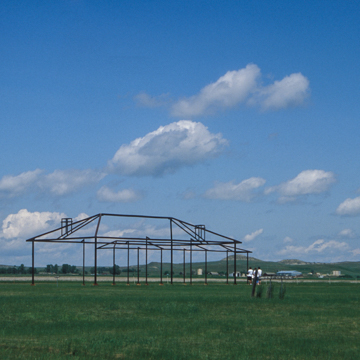Established in 1866 near the confluence of the Yellowstone and Missouri rivers, Fort Buford consisted of log and adobe quarters enclosed within a rough stockade of cottonwood logs. Materials for the post were obtained from the abandoned fur trading post at nearby Fort Union (WI7). Fort Buford was one of a chain of military posts extending from Fort Leavenworth to the Columbia River. Initially, it was designed to police the fur traders who had been illegally trading ammunition and whiskey to hostile Native Americans in the area. It also served as the point of distribution for government annuities to the various Native American tribes living in the vicinity. Fort Buford was an active military post during the U.S.-Dakota Wars of the late 1860s and 1870s. After the post was abandoned in 1895, most of the buildings were sold at public auction. The only surviving structures are the powder magazine and the officers’ quarters, now a museum. The “ghosted” barracks structure is of architectural interest, constructed of steel tubing under the directive of the State Historical Society.
You are here
Fort Buford State Historic Site
If SAH Archipedia has been useful to you, please consider supporting it.
SAH Archipedia tells the story of the United States through its buildings, landscapes, and cities. This freely available resource empowers the public with authoritative knowledge that deepens their understanding and appreciation of the built environment. But the Society of Architectural Historians, which created SAH Archipedia with University of Virginia Press, needs your support to maintain the high-caliber research, writing, photography, cartography, editing, design, and programming that make SAH Archipedia a trusted online resource available to all who value the history of place, heritage tourism, and learning.













